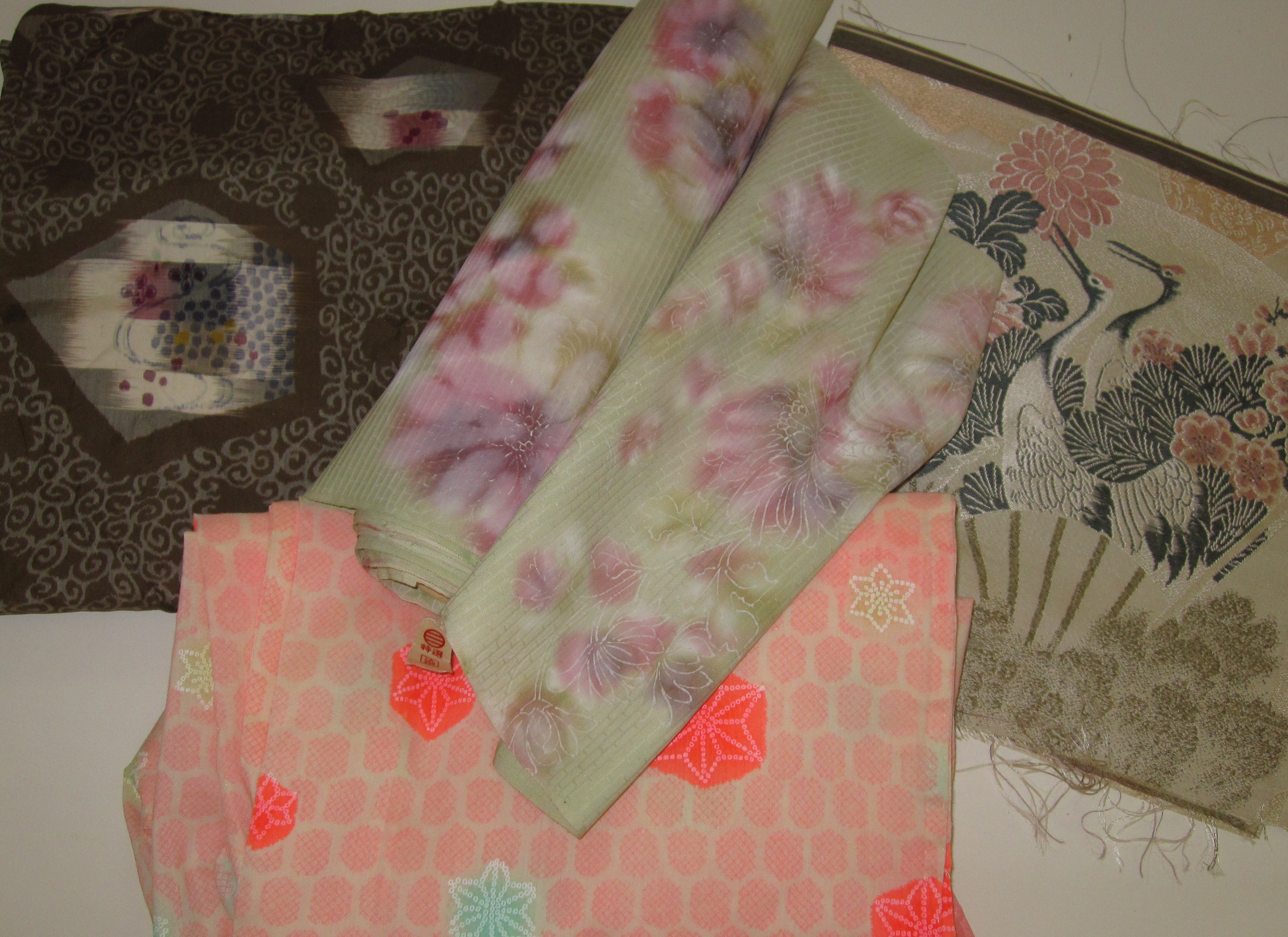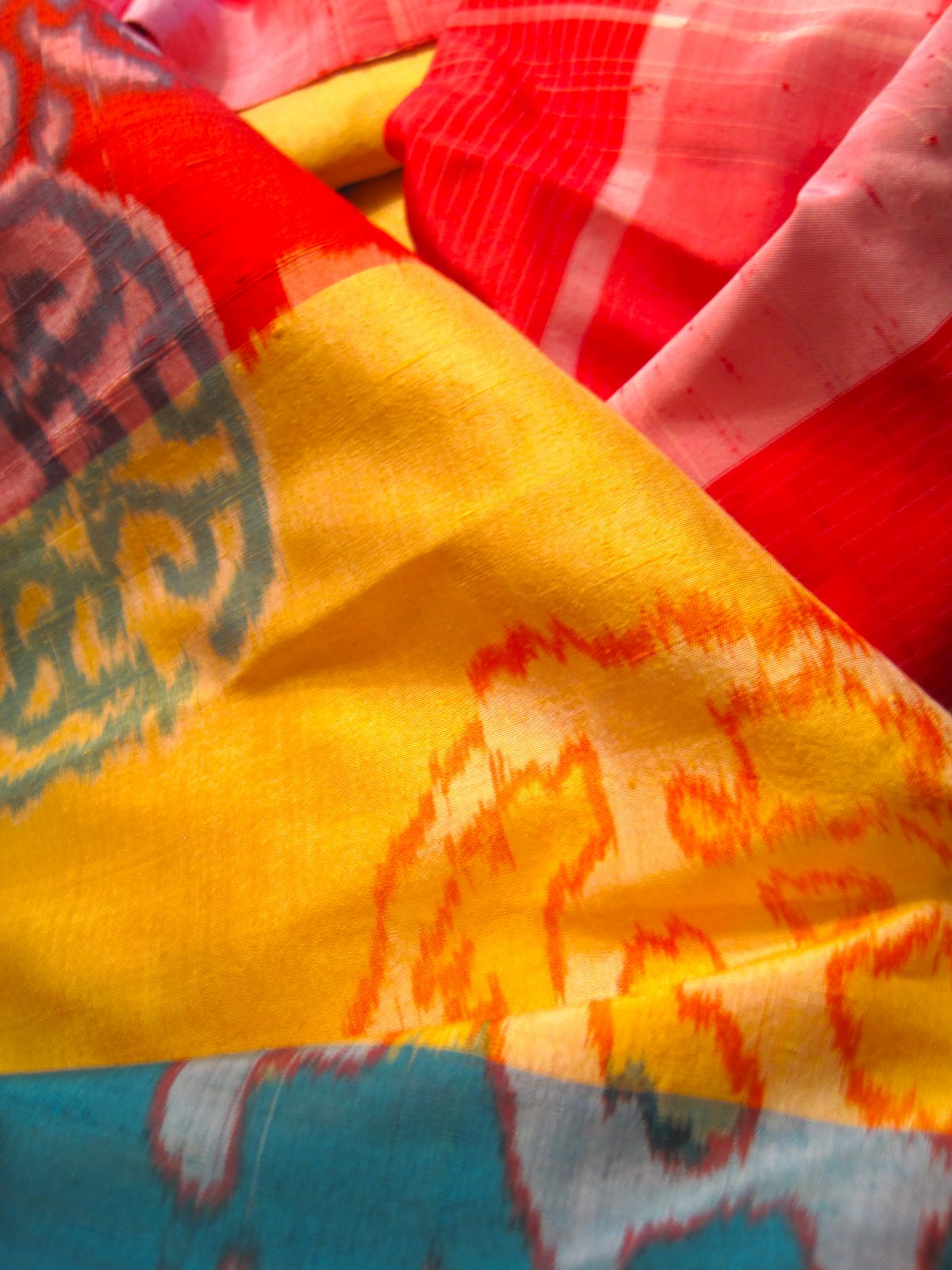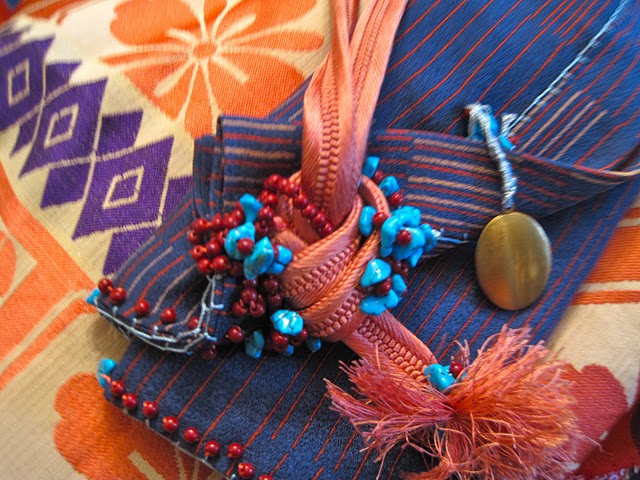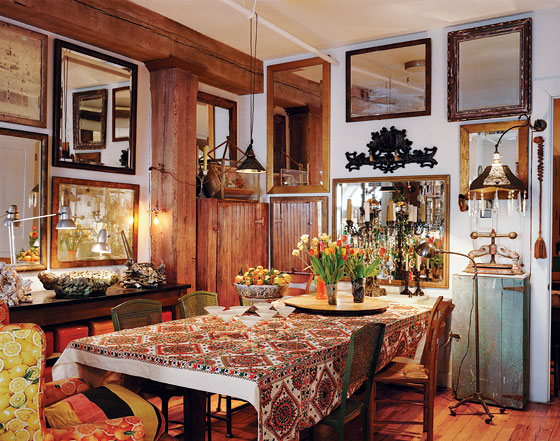I like living with my stuff. I feel safe when it’s around.
Judyth van Amringe
Some expats come abroad with nothing but a few suitcases and rent furniture for their apartments or buy everything new again. But we brought everything we owned, lock, stock and barrel, because I am in complete agreement with Judyth van Amringe. I like living with my stuff. And living in Tokyo with my things – gathered slowly and carefully over time – makes me feel connected to the very fabric of my life when I am so far from home.
Fabric, it seems, is something I cannot resist. Once again, at the shrine sale this weekend, I bought another vintage kimono. I tell myself I don’t need another but their colors, their patterns and the feel of the fabric call out to me. It’s easy to give in as they are relatively inexpensive, costing all of 500-1000 yen ($5-$10). I imagine the projects, the throw pillows, and the dress-up possibilities, both for the imaginary play of my children and for myself. This weekend my friend C actually found a fabulous black lace happi coat (short kimono) at the market and she plans to wear it over a camisole and skinny jeans for a night out.
I really believe there is such a thing as a “magpie gene” and that the desire to collect is inborn in some of us. My younger daughter, who is all of 6 years old, has it for sure. She has dug up a collection of porcelain and pottery fragments from the dirt of all the parks around us in Tokyo and keeps boxes and boxes of them for some future use (Why the fragments are there is another question entirely). Her eye is good enough that when she finds a piece of the Seto region porcelain I collect, she can pick it out to give to me to add to my collection. This giant fragment took her a number of tries over a few days to dig up and we are thinking of using it as a doorstop.
Collecting, assembling and re-purposing are inherent to the magpie mentality. Reading Dominique Browning‘s blog Slow Love Life last night I stumbled across scarves made of vintage kimono by artist Judyth van Amringe. Van Amringe seems to be the master magpie – an artist working in many different mediums, switching gears throughout her life. And Dominique Browning herself (formerly editor-in-chief of the now defunct House & Garden) is re-purposing as she explores life in the slow lane. I am looking forward to reading her book Slow Love: How I Lost My Job, Put On My Pajamas & Found Happiness. The title alone is irresistible.
In making the scarves, Judyth combines different fabrics and colors and they are reversible. Sometimes she adds details like beads or embroidery. They sound as interesting as they look in the photos, but I do wish I could see the combination of fabrics more clearly. This silk ikat positively glows – I’d love to know what she adds to it.
This one has embellishments, with a narrow obi jime (silk cord overbelt) and beads. It may even be a purse as she makes them too.
To my thinking, Judyth van Amringe’s apartment may very well be her “master work”, an accumulated montage of a life’s belongings distilled into a small space. The expression used to describe her place by The New York Times is “artfully crammed” and it is a good one. Van Amringe brings nothing new in without knowing where it is going and how it will relate to everything already there. Her space feels serene, even though it is jam-packed with objects, most of which she has changed or improved in some way.
To compensate for a standard boring bathroom in her rental, she layered a huge bookshelf, a hand carved coat stand, an upholstered slipper chair and real rugs. Oh, how I love real rugs in a bathroom, but that will have to wait for a future post.
It looks like a perfect spot for a little birdie to rest…
Photo credits: 1 & 2. me, 3 & 4. from Slow Love Life, 5 & 6. The New York Times, Photo: David Allee






